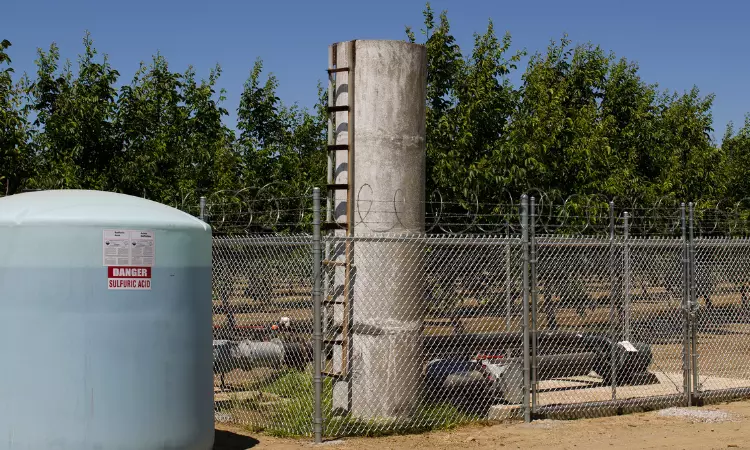Procurement Resource Analyses the Production Cost of Sulfuric Acid in its New Report
Analyses Overview of The New Production Cost Report of Sulfuric Acid
The new report by Procurement Resource, a global procurement research, and consulting firm, looks in-depth into the costs involved in the production of Sulfuric Acid. The comprehensive report analyses the production cost of the material, covering the raw material costs and co-product credit, equipment costs, land and site costs, labor wages, maintenance costs, financing charges, and depreciation costs. The extensive study describes the stepwise consumption of material and utilities along with a detailed process flow diagram. The report also assesses the latest developments within the industry that might influence Sulfuric Acid production cost, looking into the capacity expansions, plant turnarounds, mergers, acquisitions, and investments.
Product Definition:
Sulphuric acid is a viscous liquid that is water soluble and ranges in color from yellow to colourless depending on the concentration. It may erode biological tissues and metal surfaces due to its high acidic nature. ‘H2SO4’ is the chemical formula for sulfuric acid. It’s classified as a corrosive mineral acid having a high corrosive potential. Fertilisers, automobile batteries, water treatment, and paper bleaching are just a few of the uses. Sulphuric acid Market has a wide range of uses across a wide range of sectors, with fertilizer manufacturing being the most common. Hydrochloric acid, nitric acid, sulphate salts, synthetic detergents, dyes, pigments, explosives, and pharmaceuticals are among the economically relevant compounds made with sulphric acid. Sulphuric acid is also utilized in the manufacture of fertilizers like ammonium phosphate and ammonium sulphate. Sulphuric acid is a key ingredient in the manufacture of phosphoric acid, which is then turned into phosphate fertilisers. Fertilisers containing phosphate are routinely used to boost agricultural production.
Factors Impacting the Sulphuric Acid Production Cost:
Growing demand for the product as a catalyst, dehydrating agent, and reactant in the fertilizer, chemical manufacturing, paper & pulp, petroleum refinery, metal processing, and automotive sectors is projected to enhance the industry in the near future. Growing agricultural concerns about high crop production and great food quality are expected to drive fertilizer industry expansion, which will likely push the Sulfuric Acid Market. From 2017 to 2025, the market is expected to grow due to a rise in the adoption of rules such as New Source Performance Standards (NSPS) to restrict sulphur dioxide, sulfuric acid mist, particulate matter, and nitrogen oxide emissions from H2SO4 producing plants.
Procurement Resource Assessment of Sulphuric Acid Production:
The production cost report by Procurement Resource assesses the production of Sulfuric Acid from Sulphur via Double Contact Process. Sulphur is burnt to produce sulphur dioxide, which is then transformed to sulphur trioxide in this process. Through a high concentration Sulphuric Acid solution in water, Sulphur trioxide is converted to Sulphuric Acid using a double-contact double absorption (DC/DA) method.
Also Check – Sulfuric Acid Production from Tail Gas Using H2O2 Abatement, Sulfuric Acid Production from Spent Acid via Double Contact Process and Sulfuric Acid Production from Iron Pyrite Gases
This research also discusses the economics of producing sulphuric acid from sulphur using a single-contact technique. Sulphur is burnt to produce sulphur dioxide, which is subsequently transformed to sulphur trioxide in this process. In only one column, sulphur trioxide is transformed to sulphuric acid by absorption with a recirculating sulphuric acid solution in water. This technique does not recover the absorption column from sulphur dioxide-containing gas.
The cost of wasted sulphuric acid regeneration is examined in this paper. This method is used to recover spent sulphuric acid following alkylation, as well as to decompose spent acid. The wasted acid is then degraded in a furnace to produce sulphur dioxide, which is followed by a double-contact double absorption (DC/DA) process. The sulphur dioxide-containing gas is filtered before being fed into a sulphuric acid production process that uses a double-contact double absorption technique.
This paper also includes a full cost analysis of producing sulphuric acid from hydrogen sulphide gases using the wet sulphuric acid method. The hydrogen sulphide in the input gas is burnt in this process, resulting in sulphur dioxide and water. Sulphur dioxide is transformed to sulphur trioxide, which is then cooled to a temperature where it combines with water in the gas phase to generate sulphuric acid, which is then condensed and concentrated to a concentration of around 98 weight percent.
This study also offers a detailed cost analysis of the wet sulphuric acid process for manufacturing sulphuric acid from hydrogen sulphide emissions. This process burns the hydrogen sulphide in the input gas, producing sulphur dioxide and water. Sulphur dioxide is converted to sulphur trioxide, which is then cooled to the point where it reacts with water in the gas phase to create sulphuric acid, which is then condensed and concentrated to a concentration of roughly 98 weight percent.
This paper provides an up-to-date, full cost analysis of sulphuric acid production employing hydrogen peroxide abatement as a tail gas purification method. Sulphur dioxide can be converted to sulphuric acid by contacting it with an aqueous scrubbing solution of sulphuric acid including hydrogen peroxide in a gas-liquid contacting device where the liquid scrubbing phase is made the continuous phase during the contacting. The acid content of the cleaning solution can be as high as 99 percent by weight H2SO4 in this technique. The procedure may be used to reduce sulphur dioxide emissions from waste gases generated during the production of sulphuric acid, as well as SO2 emissions from other stack gases, hence reducing pollution. Furthermore, the Sulphur dioxide is oxidized to H2SO4 by hydrogen peroxide.
The process might be used to cut Sulphur dioxide emissions from waste gases created during sulphuric acid manufacturing, and SO2 emissions from other stack gases, lowering pollution. Furthermore, hydrogen peroxide oxidizes Sulphur dioxide to H2SO4.
About Us:
Procurement Resource ensures that our clients remain at the vanguard of their industries by providing actionable procurement intelligence with the help of our expert analysts, researchers, and domain experts. Our team of highly seasoned analysts undertake extensive research to provide our customers with the latest and up-to-date market reports, cost-models, price analysis, benchmarking, and category insights, which aid in simplifying the procurement process for our clientele. We work with a diverse range of procurement teams across industries to get real-time data and insights that can be effectively implemented by our customers. We also track the prices and production costs of an extensive range of goods and commodities, thus, providing you with the updated and reliable data. We, at Procurement Resource, with the help of the latest and cutting-edge techniques in the industry, help our clients understand the supply chain, procurement, and industry climate, so that they can form strategies which ensure their optimum growth.
Contact Us:
Company Name: Claight Corporation
Contact Person: Chris Smiths
Email: sales@procurementresource.com
Toll Free Number: USA & Canada: +1-415-325-5166 | Europe & Africa: +44-702-402-5790 | APAC: +91-8586081494
Address: 30 North Gould Street, Sheridan, WY 82801, USA
Blog – https://procurementresource.blogspot.com/
Website: https://www.procurementresource.com/


